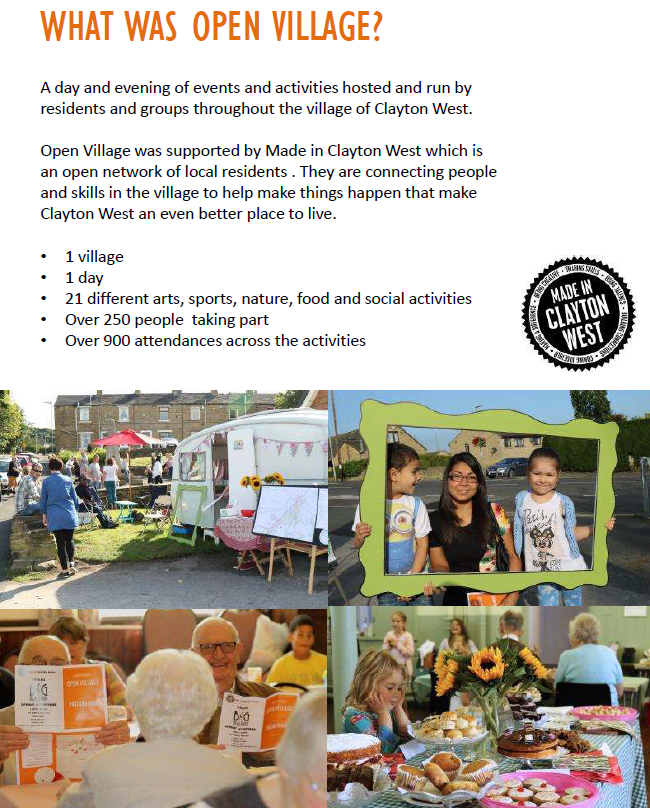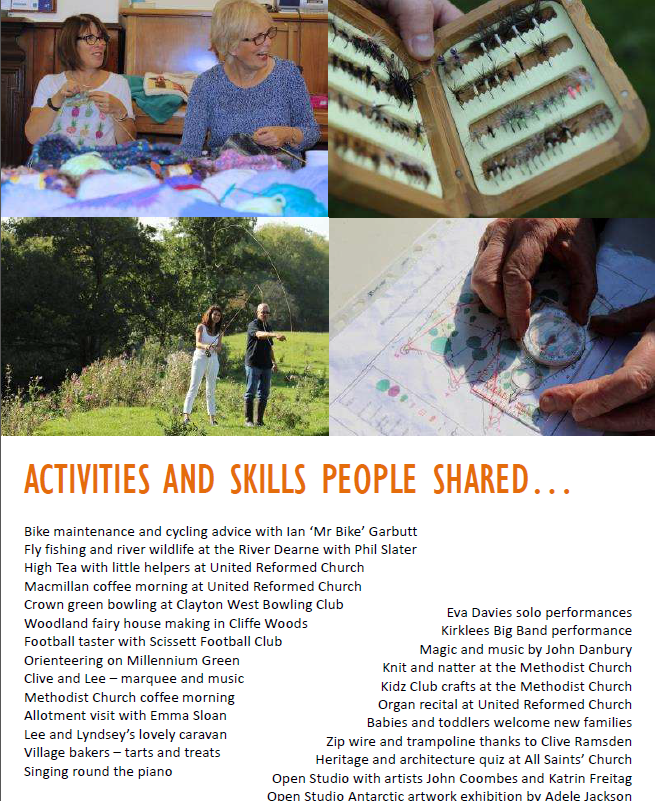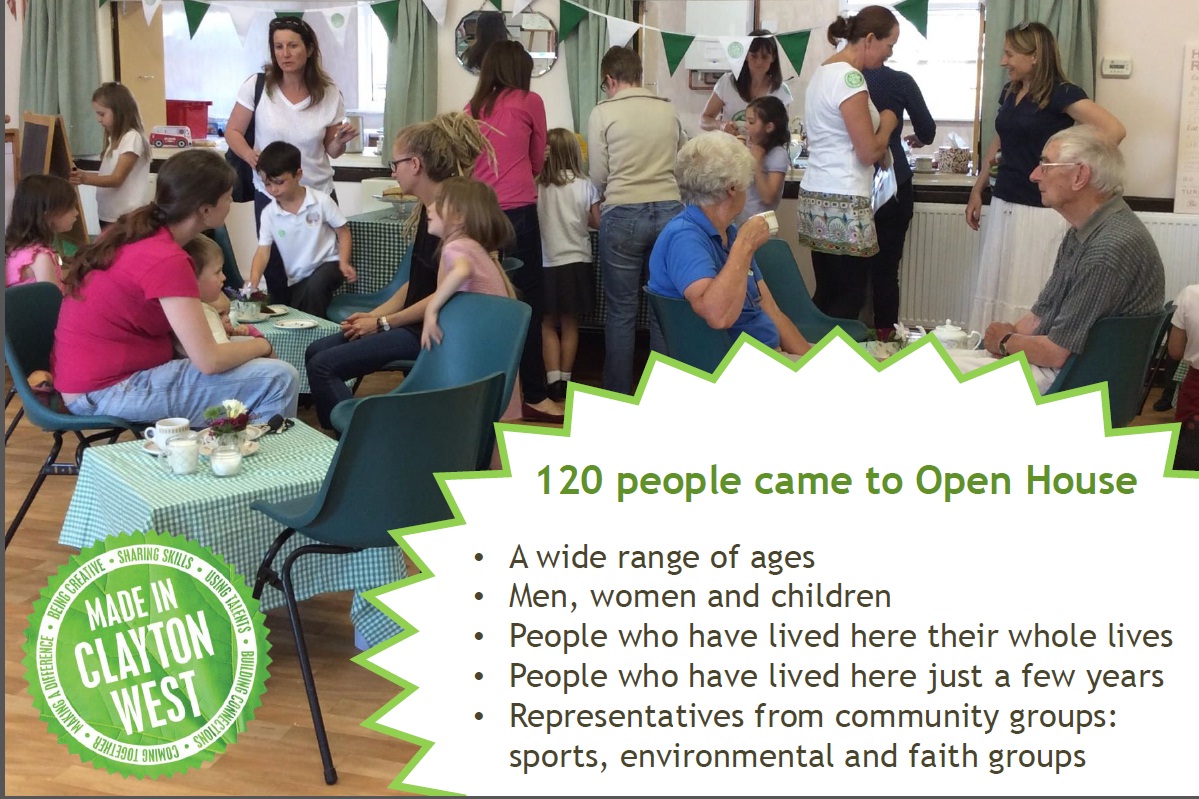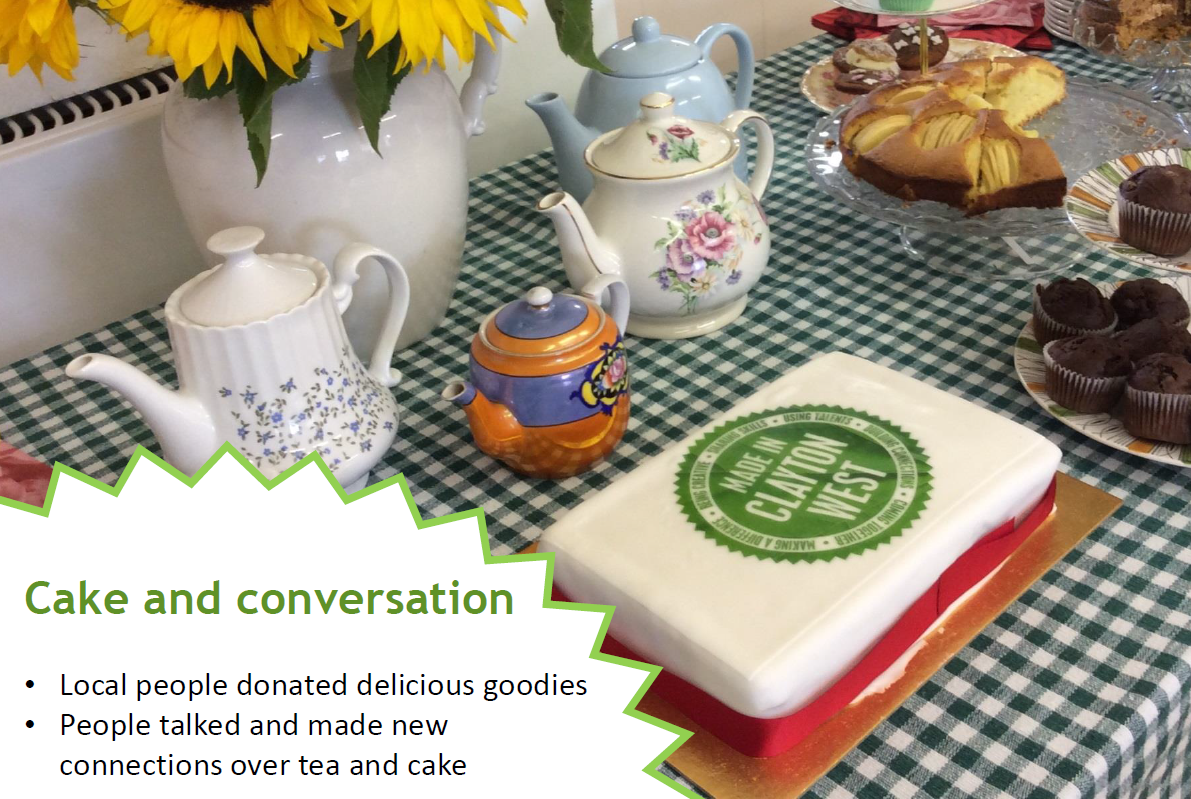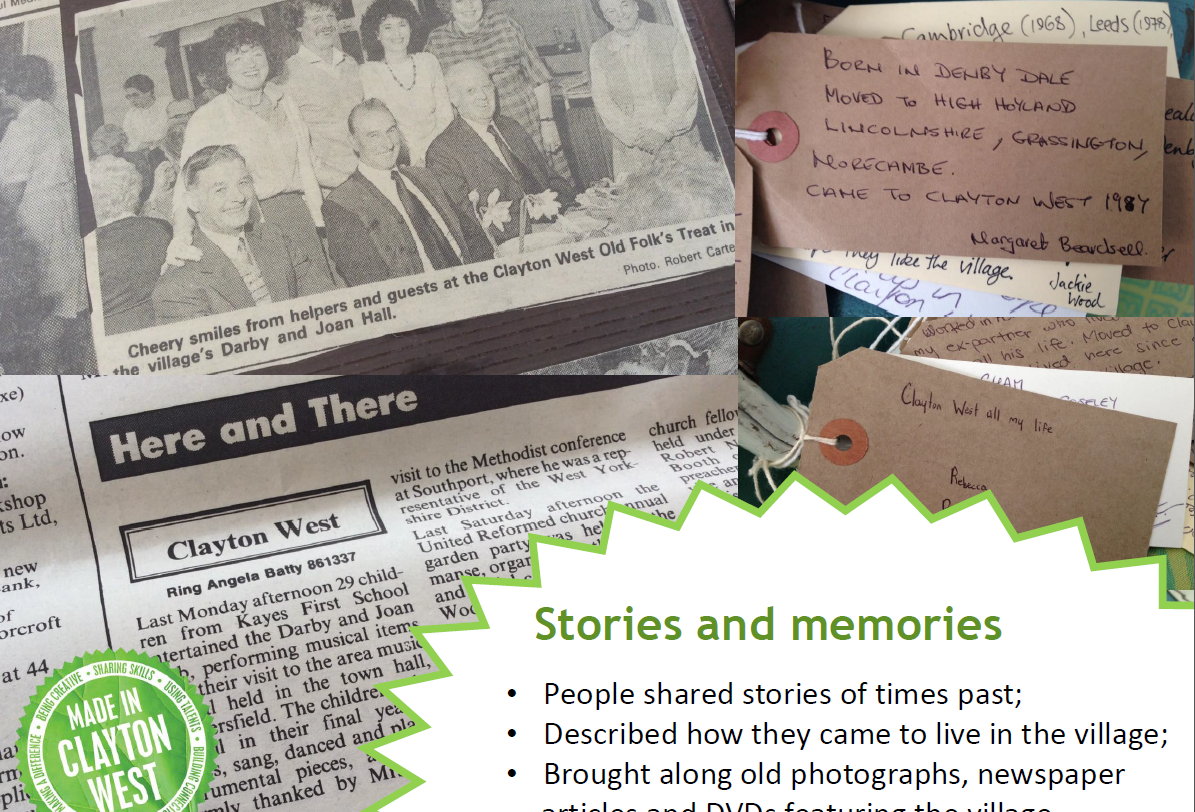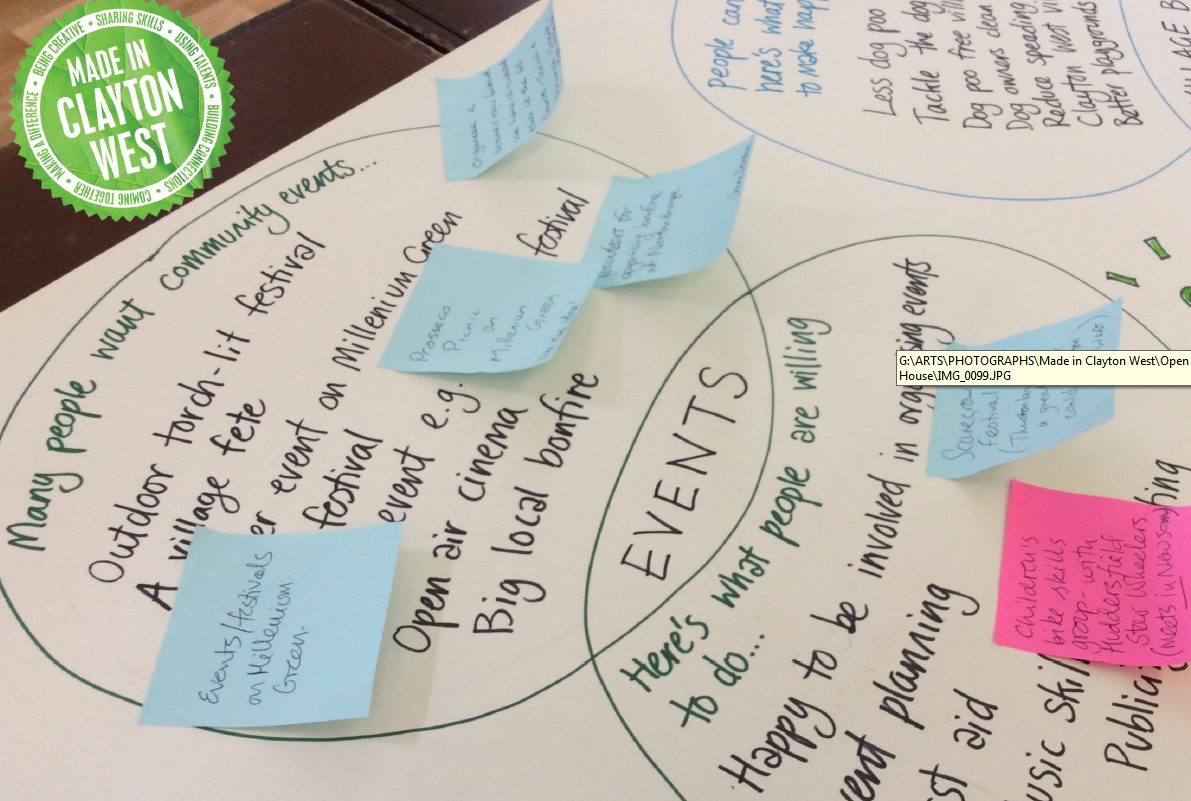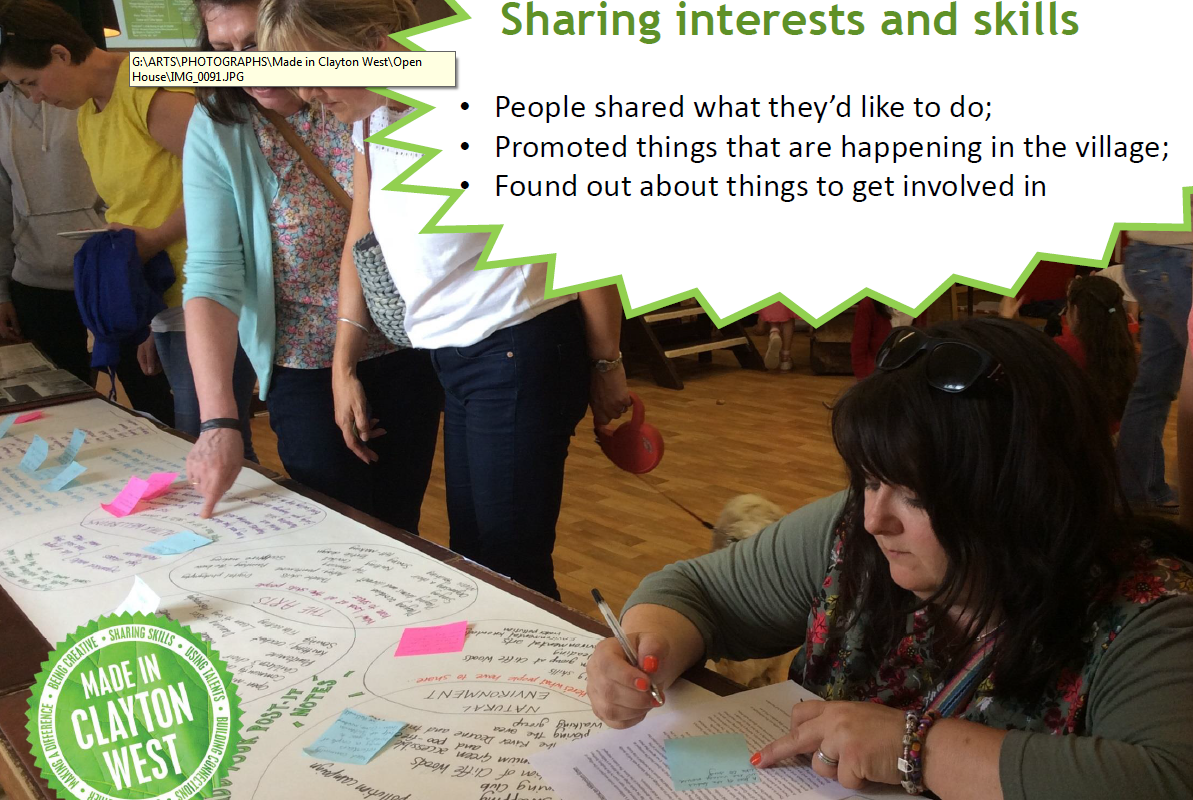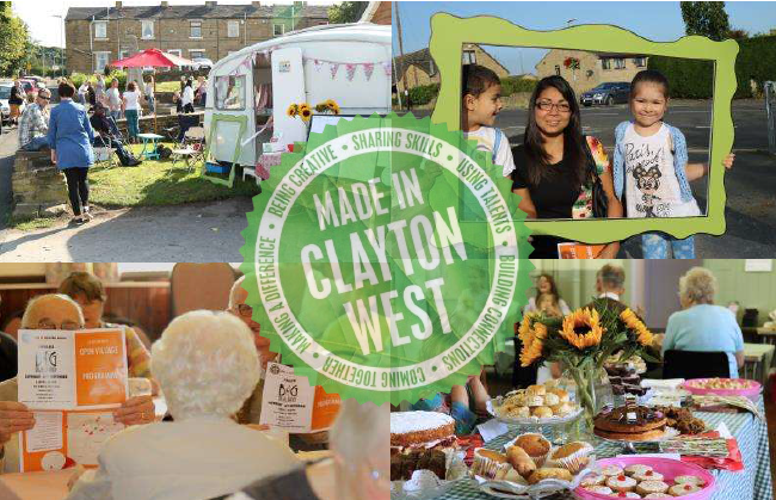
Touchstone Three: Appreciating the assets of the local community
In this third blog of the Eight Touchstones of Community Building series, Chris a member of the Nurture Development team shares the story of how the community of Clayton West engaged in a dynamic listening campaign with a view to appreciating the assets of their local community. Vicky and Jo (local connectors) with the support of Adele (community animator) set about discovering what people cared about strongly enough to act on together and what assets existed locally that they could tap into to address shared priorities with their neighbours.
Clayton West Open Village
In the very early days, Adele, Vicky and Jo had a conversation around the kitchen table about Vicky’s and Jo’s passion to connect with their wider neighbourhood. That conversation made them curious as to whether anyone else felt the same way? They agreed on the following questions to find the answer:
- Wouldn’t it be good to know more people in the village?
- What would make it an even better place to live?
- What would they like to do to make that happen?
Having set out with these questions on their lips it soon became clear that there were others in the community who felt the same; indeed 40 members of the community helped to host conversations on their streets to get a broader conversation going which over time reached the whole village & outlying areas. This grew into a series of what they called ‘Open House’ events (which were more like parties than meetings, with food, laughter and some serious issues featuring) which attracted more people into the conversation, soon enough two things became clear:
- Lots of people would like to be more connected, they were just waiting to be asked
- Lots of people had contributions that they could make; and they wanted to give of their gifts and resources, they were just waiting to be asked
Having spent time ‘in Discovery mode’ in the community it was clear that there was energy for change and people were up for contributing in their own way, many residents had spoken about an event which used to be run by the community in the past, what was termed a: ‘treat’, a village tradition of over 100 years old where a meal and entertainment was put on to honour senior citizens of the community. These occasions were remembered very fondly by those who’d experienced them. Hence during the listening campaign many of the older residents and local natural historians had suggested it as something that not only would they like to do, but that they would also help to make it happen.
That’s how the idea of an ‘Open Village’ came about – with individuals, groups and associations opening their doors and sharing their passions and interests. What a wonderfully dynamic way to appreciate local passions, and local assets. It was a party and everyone who lives in Clayton West was invited, a celebration of the groups, associations and individuals who make up the community and an opportunity to use the whole village as the stage.
The first Open Village event was held on a sunny Saturday in September and involved individuals and groups sharing their passions and interests with others in the village, it included:
As well as appreciating assets, residents began teaching others how to fish; sharing their gardens and inviting neighbours round to visit. More formal groups working with older people, young people all coming together in the spirit of community also emerged. So the very process of appreciating assets spurred neighbour into further and deeper collective action.
Lots of others were interested in doing creative activities – from sculpture projects, community choirs, to arts and crafts. What was common across all these activities was that they were community led activities and emerged from the listening conversation. These activities emerged over time, but in the early stages, the first task was ‘build community through conversation’ so that people can come together and participated in fireside chats, or informal conversation while engaging in shared hobbies/passions.
There are many reasons to be inspired by the work of the community and Adele, Vicky and Jo whose role as community connectors and community animators helped weave the whole thing together:
- By shifting the emphasis away from ‘art’ or whatever key driver an agency has – it opens up the possibility for a much more transformative and inclusive dialogue in the community.
- Practitioners lead by stepping back – creating opportunities for community to connect and to proactively ‘build community’ so that people take action for themselves
- Sustainability is the gift of the community to give – Over 3 years have passed since Adele’s initial conversations with Vicky and Jo and the movement continues to grow.
Conclusion
Touchstone 3 lifts-up the incredible power and value of local residents actively appreciating local assets (especially what is local and in their control) and viewing them as the primary resources for building their communities. This jars in a deliciously disruptive way with more traditional approaches that encourage residents to see their primary assets as external and institutional. Touchstone 3 also emphasise the fact that many of these local resources are invisible and unconnected – they can only be revealed through curious conversations filled with searching questions. Hence in essence what Vicky and Jo did with the support of Adele, was to find a group of other neighbours in Clayton West who were prepared to make the invisible visible, and then to wonder out loud: “How might we connect these “local assets” up more effectively?” Open Village was their response, a local invention, particular to that place, and that place alone.
By working this way, they broadened their circle of participation to include near everyone in their village. To reduce this to a description like: they conducted an asset mapping exercise, would be to fundamentally miss the point and the transformative beauty of what they engaged in. Better to say that what they did was to commit intentional, repetitive and collective acts of revelation. Adele took on the role of a community animator and supported residents on the journey, her role was invaluable and did it with great skill, but largely her function was to cheer them on.
John McKnight often shares a story of a visit he made to the West of Ireland in the mid 60s. One day he wanted to go fishing and so he went into a local store and asked the shopkeeper: “do you sell bait?”, to which the shopkeeper asked” “when you say ‘bait’, what do you mean exactly?”. “Well like worms”, John replied. The shopkeeper smiled and offered this advice: “Well if I was you I’d turn around the way I came, and if you look on the ground outside the front door to the left and right, you’ll see two white washed flag stones, I think if you lifted up one of those, you’d find all the bait you need.” It’s a wonderful allegory which captures the essence of Touchstone 3, discovering the worms was just the start, John then needed to hook his bait, cast his line and catch some fish. The ABCD process then is three-fold: a) Discover, b) Connect, c) Mobilise.
Asset-mapping/appreciating assets is not an action step, nor should it be about data gathering. It is essentially about resident to resident relationship building. Vicky, Jo and Adele understood this and they didn’t do an asset map to or for the community, they organised, and enabled the conditions within neighbours could appreciate what they have in all its abundance.
Chris Chinnock, Cormac Russell
Check out our 2017-18 Learning, Development and Consultancy offer: www.nurturedevelopment.org/what-we-offer/

